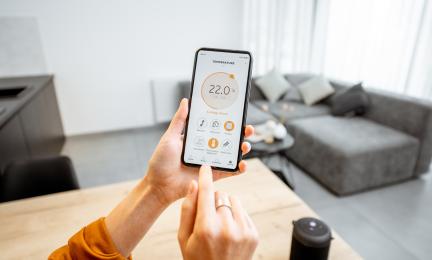Your wallet will thank you for smart use of electricity

Schedule electricity consumption for low-cost hours
Flexible consumption means the momentary reduction or increase of electricity consumption in accordance with its market price. In everyday life, you can often time your use of electricity for moments or days when electricity is cheaper. You can track the price of electricity using Fingrid’s Tuntihinta mobile app, for example.
Climate change mitigation and the electrification of society require a clean energy transition. Finland produces renewable and weather-dependent energy at an accelerating pace, and the production volumes vary.
On windy and sunny days, electricity is usually cheaper. During peak demand, prices may rise, as the electricity system may need to rely on more expensive and less sustainable energy sources, such as combustible gas, oil and biomass.
Flexible consumption means that, when electricity is expensive, households reduce their consumption or schedule the use of electricity for the less expensive hours. However, automation and smart control are often needed in order to gain the best financial benefits.
Three steps to smart use of electricity
Households account for just over one quarter of the total electricity consumption in Finland. You can take a simple path to make the most out of your electricity consumption.
-
Observe your electricity usage
Get to know how you use electricity – what consumes a lot of electricity in your everyday life, what consumes little, and when do you use electricity. Your energy company offers services to help monitor your use of electricity. Choose the most sensible electricity contract for you. A dynamic electricity tariff contract is often the cheapest option for consumers.
-
Save and schedule
Focus on equipment and actions that use a lot of electricity when trying to reduce consumption. Use electricity sparingly and schedule its usage for less expensive hours.
-
Let automation help
Particularly in properties with direct electric heating, smart thermostats can create significant savings. There are also more and more smart control options in household appliances.
What studies tell us about the energy transition and the willingness of people in Finland to use flexible consumption
People in Finland support clean energy transition
People in Finland support the clean energy transition. Wind and solar energy are welcomed and the majority are also in favour of increasing nuclear power.
Flexible consumption receives support
Approximately half of the households hope that Finland will invest in flexible consumption in households. Only 15% of households do not want this change.
Money is a motivator
Households are particularly motivated by the savings they might get through flexible consumption. For this reason, dynamic electricity tariff customers in particular are willing to schedule their consumption for less expensive hours.
Significant reduction in emissions is a motivator
Households value the emission reductions flexible consumption brings. If the emission reduction is significant, households are happy with receiving even a smaller compensation for scheduling their consumption.
Ready for remotely controlled heating
Households are more prepared for smart remote control of heating than smart remote control of consumption electricity.
Crisis affects consumption
During the energy crisis, people in Finland reduced their electricity consumption significantly, especially in autumn and winter 2022, due to high electricity prices and concerns related to the sufficiency of electricity. People were encouraged to save electricity and schedule when they use it, and up to 89% of Finns took energy saving measures.